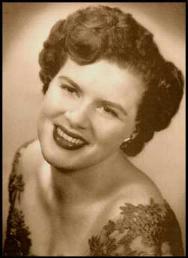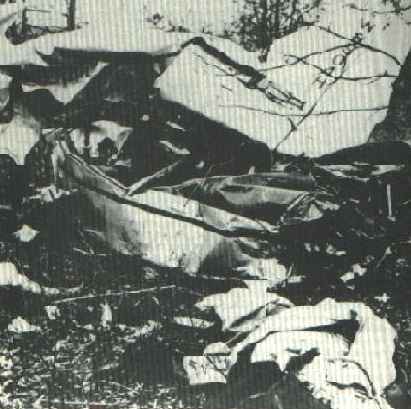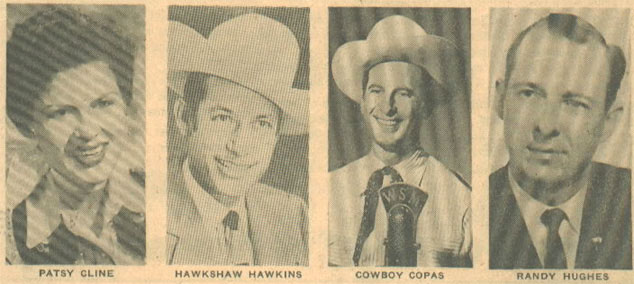Patsy Cline: The NTSB Report

Patsy Cline
Patsy Cline's (Virginia Patterson Hensley) plane crashed on 5 March 1963. Also on board were fellow performers Lloyd Estel Copas (Cowboy Copas) and Harold Franklin Hawkins (Hawkshaw Hawkins), The pilot was Cline's manager (and Copas's son-in-law) Randy Hughes. I copied this from a poor photo of the National Transportation and Safety Board's original crash report- some portions I could not definitively make out. Any questionable areas are contained in brackets [ ].
2-1324
Camden, Tenn.
3/5/63
Piper PA-24
N-7000P (D)
CR 1 0 0
PX 3 0 0
Non-instrument pilot attempted visual flight in adverse weather conditions, resulting in a loss of control.
Judgement of the pilot in initiating flight in the existing conditions.
(BUSINESS) Private; age 34; 160 total hours; 117 in type; not instrument rated.
At 1705 c.a.t., the pilot landed N-7000P at Dyersburg, Tennessee to obtain weather information for the remaining portion of his flight from Kansas City, Missouri to Nashville, Tennessee. The pilot received a thorough weather briefing based on reports of existing and forecast terminal and area weather, current SIGMET [?] and current advisories to light aircraft. He was informed that the en route weather was unfavorable and that the destination weather was below VFR minima with further deterioration indicated before any improving trends could be expected. After receiving the weather briefing, the pilot talked with his wife in Nashville by telephone, and she informed him that the sun was shining in Nashville. The pilot then indicated his intention to continue the flight and would return if he found it necessary. Shortly thereafter, at 1807, the pilot taxied out and took off. During taxi, the pilot was again furnished with weather information by the tower operator. After takeoff, there were no further radio contacts with N-7000P.
About 1830, an aviation qualified witness near Camden, Tennessee, heard the sounds of an aircraft flying at low altitude, and directed his attention in the direction of the sounds. He then observed the aircraft as it descended the low overcast in an estimated 45 degree nosedown dive, and then heard a dull crash.

The crash site.
Investigation revealed that N-7000P had crashed on a wooded, swampy area about five miles west of Camden. Inspection of the wreckage disclosed that the aircraft was intact and the engine was developing substantial power at initial impact with trees. There was no evidence of preimpact failure or malfunction. Post-mortem examination of the pilot disclosed nothing that could have been a factor in the accident. The weather at Camden was reported as, "Ceiling 500 feet, visibility 5 miles."

A newspaper clipping from the era. From www.patsified.com.

